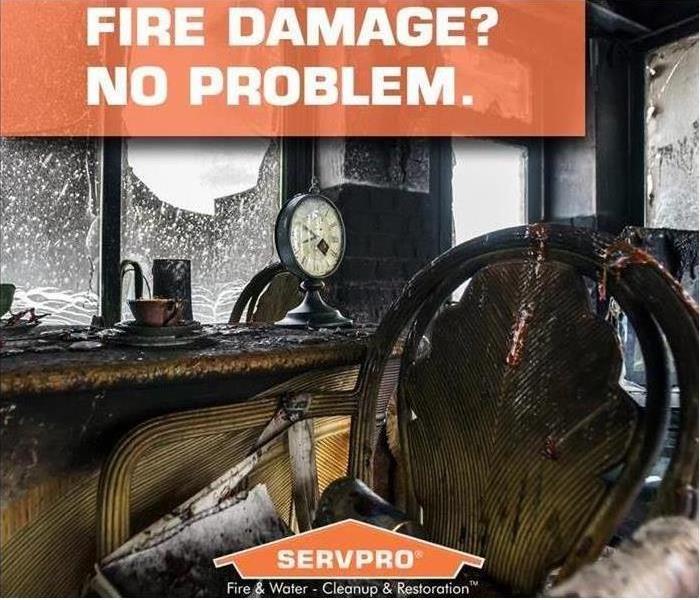Trust the Experts in Cleaning Contents Affected by Smoke
9/9/2021 (Permalink)
Type of Burn and Residues Dictate SERVPRO's Cleanup and Restoration Methods
Whenever a fire starts inside a building, smoke can affect many different items. During a fire, combustion which is in the process of a soild turning into a gas by applying heat takes place. Smoke is created by materials that do not burn completely.
During a burn, smoke can travel all over the structure causing various problems. A big part of mitigating fire damage is dealing with smoke-related issues. When a blaze takes place materials all over the home, get coated in soot residue, and foul odors get left behind.
When restoring a house damaged by smoke, our SERVPRO technicians inspect the structure to figure out which areas were affected. We determine which cleaning methods to use based on how concentrated the soot is, the type of residue present, and the kind of materials affected. If the soot is heavily concentrated, then it can be difficult to clean whereas light residues can be wiped off easily.
A fire creates different kinds of smoke throughout its duration based on the materials it burns, the speed of combustion and the amount of oxygen. When synthetic materials are burned, they create soot that adheres to surfaces better than residues resulting from natural substances such as wood. Fires that burn slow and lack oxygen produce a wet smoke that can be extremely difficult to remove compared to quick burning fires that create a dry smoke.
The type of materials surfaces are made of also affects the cleanability of soot residues. Non-porous materials such as plastic and metal repel moisture well making them easy for our SERVPRO technicians to clean using wet, water-based chemicals. Non-porous materials such as softwood and upholstery absorb soot residues better, and they can penetrate deep into the material. Water-based chemicals can soak the soot deeper into the material causing them to get ruined. Dry cleaning methods such as wiping with a dry sponge prove to work better in removing soot from porous substances.
Various methods are available to use when dealing with multiple types of soot residues affected by different kinds of materials. There are different types of cleaning chemicals as well as application methods that are designed specifically for dealing with certain situations.
SERVPRO of Albany & Americus is here to help you 24/7/365 with any fire damage and restoration issue.
Please call us at 229-439-2048






 24/7 Emergency Service
24/7 Emergency Service
